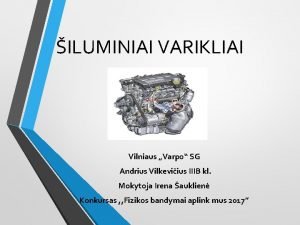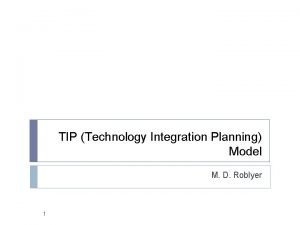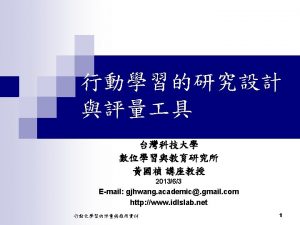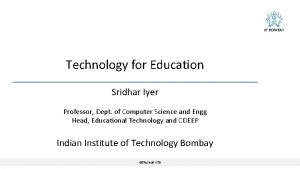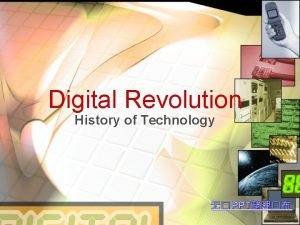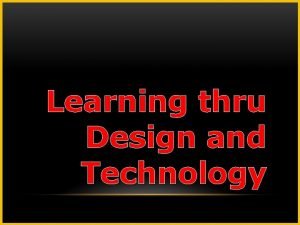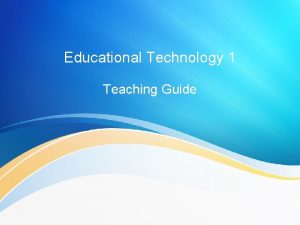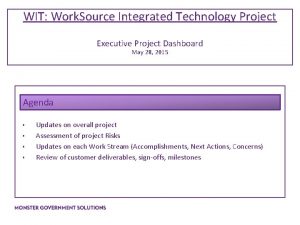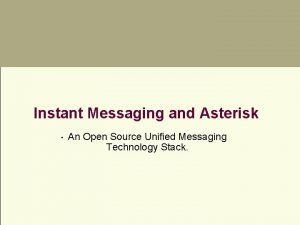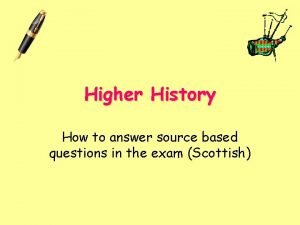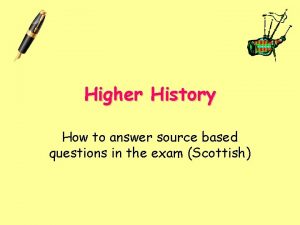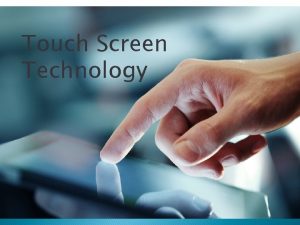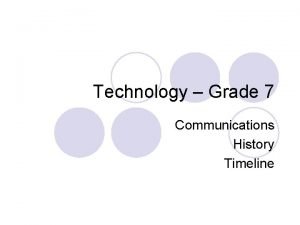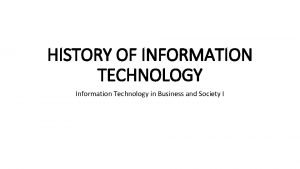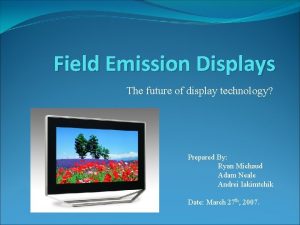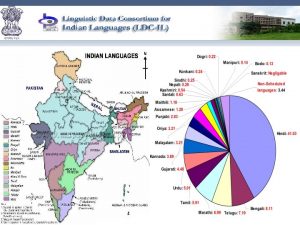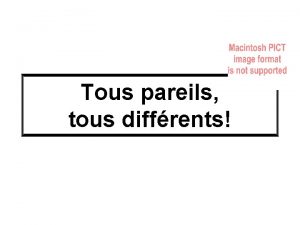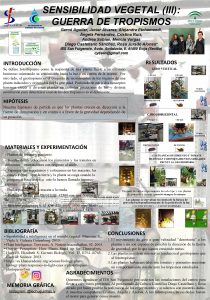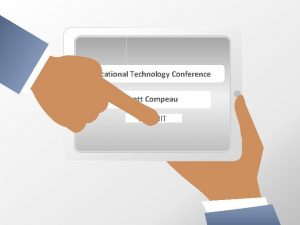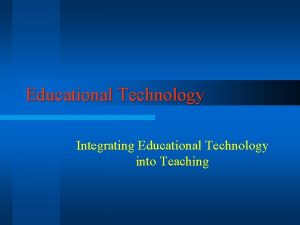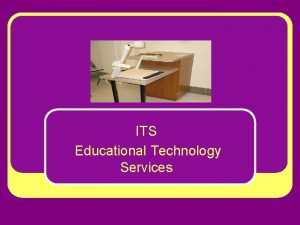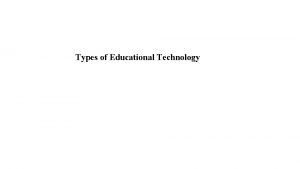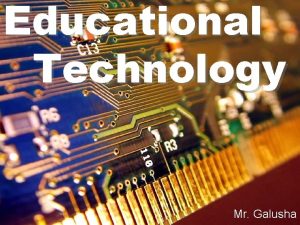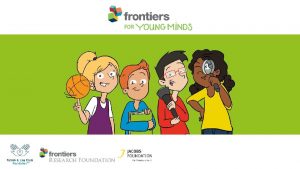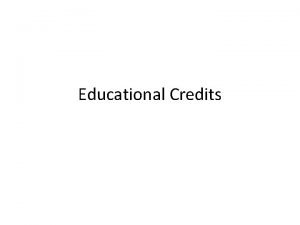History of Educational Technology Source Garo C 2007

















- Slides: 17

History of Educational Technology Source: Garo, C. (2007). Teaching educational technology. Manila: Rex Publishing Company.

Ancient Civilization - use of pointed sticks to inscript signs and symbols on the leaves - use of knives to inscript signs and symbols on the bark of trees

Egyptians (3100 B. C. ) - developed a system of picture writing called hieroglyphics Hieroglyphics – may represent the objects for which they stand for or represent a sound or group of sounds Scribes – group of men trained on the art of writing and came to be the country’s chronicler of events

Ancient Greece Spartan Education – emphasized the development of the physical body coupled with discipline Boys exercises and activities that promoted bodily strength, endurance, and vitality activities: dancing, wrestling, horseback riding, swimming, gymnastics Paidonomus: the boys’ teacher; a military commander in the public barracks Girls stayed at home with their mothers and were taught housekeeping

Athens - first to recognize the right of the individual to develop to the fullest - believed that the mind and the body has a strong relationship - prime concern of music schools, grammar schools, and public gymnasiums / palaestra is developing the mind and the body

Sophists - wandering scholars - emphasized cognitive rules, systematic arrangement of subject matter, use of instructional technologies, design and implementation of effective instructional materials

Medieval Era - establishment of the Medieval University - Emperor Frederick I of Bologna in 1158 chartered the first university degrees offered were expanded which required students to engage in more in depth studies and to write their theses, defend them in public before the deans, facultas, and rectors

- Saracens or the Arabs among the Moors of Spain aim of education was search for knowledge and the application of scientific facts to their daily lives their curriculum was the most organized and complete in the elementary, secondary, and collegiate levels their universities and libraries were the models in the entire Europe because they invented the printing press originated the scientific method of teaching

Renaissance Period - modern times began - lines of concern: intellectual, aesthetic, and scientific - movements: humanism, disciplinism, and rationalism - Rationalism: contributed to the development of educational technology especially along theories and practices

- John Locke: nature of the child’s mind at birth (tabula rasa) - Johann Amos Comenius: developed the first picture book known as Orbis Pictus (The World in Pictures) pioneer in instructional technology development - Maria Montessori: use of multi-sensory materials in teaching

Age of Naturalism - Jean Jacques Rousseau: authored the book Emile aim of education was the preservation of the natural goodness of the individual and the formation of society based upon the recognition of natural individual rights - Herbartian Method of Teaching: preparation, presentation, comparison and abstraction, generalization and application

- Pestallozi: believed that teaching is more effective if it proceeds from concrete to abstract, hence the use of actual and real objects that involve most of the senses - Froebel: father of kindergarten emphasized the use of actual objects which could be manipulated by the learners recommended the use of play and songs

19 th Century - John Dewey: formulated the scientific theory of learning; pragmatist - Edward Thorndike: laws of learning; connectionist - paved the way to the development of effective educational technology including the production of books, use of blackboards, and improvement of writing implements

- photography was invented giving way to a movement called visual instruction - visual media became widely accepted in 1920 - audio-visual media texts was published - in 1926, educational films were used as instructional media - in 1932, the first instructional TV program was aired at the State University of Iowa

- 16 mm sound motion picture was developed - during the 2 nd World War: movies, filmstrips, radio, and other pictorial devices were used in military trainings - programmed instruction by Skinner - Bloom’s taxonomy of educational objectives - use of modularized instruction

Contemporary Times - multimedia resources and computers in classrooms - maintenance of an educational media center - revision and enrichment of curricular offerings to include courses in computer applications - use of CAI

- use of multimedia presentations in the classrooms - educational organizations are linking up with TEIs - use of Internet and E-mail for fast-paced interactive learning, communication, and search for information - computer literacy programs for ISYs and OSYs - computers became more user-friendly
 Paprastieji mechanizmai
Paprastieji mechanizmai Pirmoji garo masina
Pirmoji garo masina Technology integration planning
Technology integration planning Ancova table
Ancova table Educational technology interoperability
Educational technology interoperability Sridhar iyer iit bombay
Sridhar iyer iit bombay Digital revolution ppt
Digital revolution ppt The greek word which means skill is_______.
The greek word which means skill is_______. Learning through design and technology
Learning through design and technology Which is not a use of multimedia according to pitagan?
Which is not a use of multimedia according to pitagan? Wit source technology
Wit source technology Open source unified communications
Open source unified communications Higher history evaluate the usefulness
Higher history evaluate the usefulness How to answer source questions history
How to answer source questions history Touch screen purpose
Touch screen purpose Communication history timeline
Communication history timeline History of information technology
History of information technology Ginsa
Ginsa
